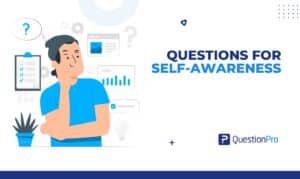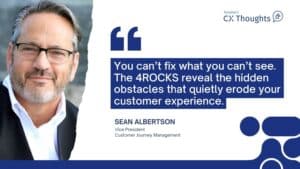
Do you know what a case study is and what advantages it holds for your business? As a marketing strategy, it’s highly effective to rely on your customers and their positive testimonials to convert other prospects.
Writing a case study is one of the best ways to do so. More comprehensive than a simple testimonial, it explains in detail how your company managed to find solutions to a specific client’s problems, thereby demonstrating its commitment and generating trust.
Let’s learn more about the characteristics of a case study and what you should consider when creating one.
What is a case study?
A case study is a detailed examination of a specific subject. Case studies are commonly used in social, educational, clinical, and business research.
The research design of a case study often involves qualitative methods, but sometimes quantitative methods are also utilized.
Case studies serve to describe, compare, evaluate, and understand different aspects of a research problem.
Steps to conduct a case study
A case study is an appropriate research design when you aim to obtain concrete, contextual, and in-depth knowledge about a specific subject. It allows you to explore the key characteristics, meanings, and implications of the case.
Case studies keep your project focused and manageable when you lack time or resources for large-scale research.
You can use a single complex case study to delve deep into a single topic or conduct multiple case studies to compare and shed light on different aspects of your research problem.
Now that we know what a case study is, let’s explore the steps to conduct one:
Step 1: Select a case
Once you have developed the problem statement and research questions, you should choose the specific case to focus on. A good case study should have the potential to:
Provide new or unexpected information about the subject. Propose practical measures to solve a problem. Open up new avenues for research. If you are conducting a case study on your customers, check with the relevant department, whether it’s customer service or customer success, to identify potential customers with whom you could work to obtain their testimonials.
Step 2: Gather the data
There are various research methods you can employ to collect data for your case study.
Case studies tend to focus on qualitative data using methods such as interviews, observations, and analysis of primary and secondary sources (e.g., press articles, photographs, and official records).
Sometimes, a case study also collects quantitative data, for example, through online surveys where you can incorporate open-ended questions to obtain the qualitative insights you require.
LEARN ABOUT: Testimonial Questions
Case study questionnaire sample
Here is an example of a survey that can be useful in gathering data for your case study:
- Contact Information:
- Name:
- Company:
How did you hear about QuestionPro?
- By recommendation from a friend or colleague
- From a co-worker
- Through a Google search
- Through social media
- From a website unrelated to QuestionPro
- I met them at an event
- Other (Please specify)
What tool or process did you use before QuestionPro? Check all that apply
- Pen and paper or other traditional tools
- Another survey software
- A different software (not for surveys)
- Secondary information
- None
- Other (Please specify)
What limitations did you face with the tool(s) or process(es) you used before?
How has QuestionPro helped you overcome your challenges?
How has QuestionPro impacted your objectives and those of your company?
What do you consider the most successful project you have done with QuestionPro?
What results did you achieve, and what did you do with them?
What is your favorite part about using QuestionPro, and why?
On a scale of 1 to 10, how likely are you to recommend QuestionPro to others in your industry?
1 Very unlikely to 10 Very likely
Very unlikely 1 2 3 4 5 6 7 8 9 10 Very likely
How can we improve?
Step 3: Write a summary
Always keep in mind that internet users are busy people: not everyone will have the time to read your entire case study (or at least not right away).
An executive summary is essential to give everyone a vague idea of what your case study is about and, more importantly, the results.
You can even create downloadable material where there is more information that can be consulted.
Step 4: Introduce the client
While the case study is intended to serve your company, you should not steal the spotlight from the client whose story you are telling.
Present the client in the best possible way, even if it’s just to thank them for agreeing to contribute to your content.
Step 5: Show the challenges to overcome
This step is crucial: It’s about describing, in 2 or 3 paragraphs, the context in which the client was placed and the reasons why they turned to you.
Ideally, this section should give the floor to the main stakeholder, who can directly explain the problems they encountered before resorting to your services or products.
This is also an opportunity to mention the objectives the client wanted to achieve (e.g., increase sales by 10%, increase blog traffic, etc.).
This is one of the main reasons to understand what a case study is and implement it as reference content for your other prospects or clients.
Step 6: Showcase the provided solutions
Now is the time to talk about what you actually did to help your client. This is precisely the most important part: knowing how you have solved a problem that others may have.
This is an opportunity to present, with evidence, the advantages of your products or services and how they solved the client’s problem.
Explain how you implemented your solution and overcame challenges and limitations.
Now that you have explained your approach and highlighted the qualities of your solution, you need to demonstrate that it really works: This is where you can truly showcase your expertise.
List all the positive effects your products or services have had on your clients, with testimonials from them that support your claims.
And most importantly, evaluate how well you have met or exceeded expectations by achieving even better results. It is essential to demonstrate your ability to fulfill the objectives you have set.
Step 8: Create a great conclusion
You can take advantage of the conclusion of your case study to thank the client who kindly agreed to participate but also to review the main points of the study and your accomplishments.
Even better, invite your readers to contact you if they find themselves in a similar situation to the client you have written about.
QuestionPro’s Case Studies
Now that you know what a case study is and the advantages of obtaining feedback from your clients, start by making a list of clients with whom you have a good relationship and gathering relevant aspects that will help provide a comprehensive view of your relationship.
I would like to share some of QuestionPro’s Case Studies. In our cases, we gather information from our clients through a survey and conduct small interviews with the help of our customer success team. After collecting the information, we create the content, which is then reviewed and validated by our clients before being published on our website.
This type of content is very useful for building trust with new prospects. It’s a tool that provides assurance to new clients and helps us demonstrate the solutions we have available.
Make the decision to start a relationship that will contribute to the growth of your business. We are confident that we have the solution you are looking for.
Start by creating a free account or request a demonstration of our survey software. We will address all your questions about using our platform and the services we offer.







